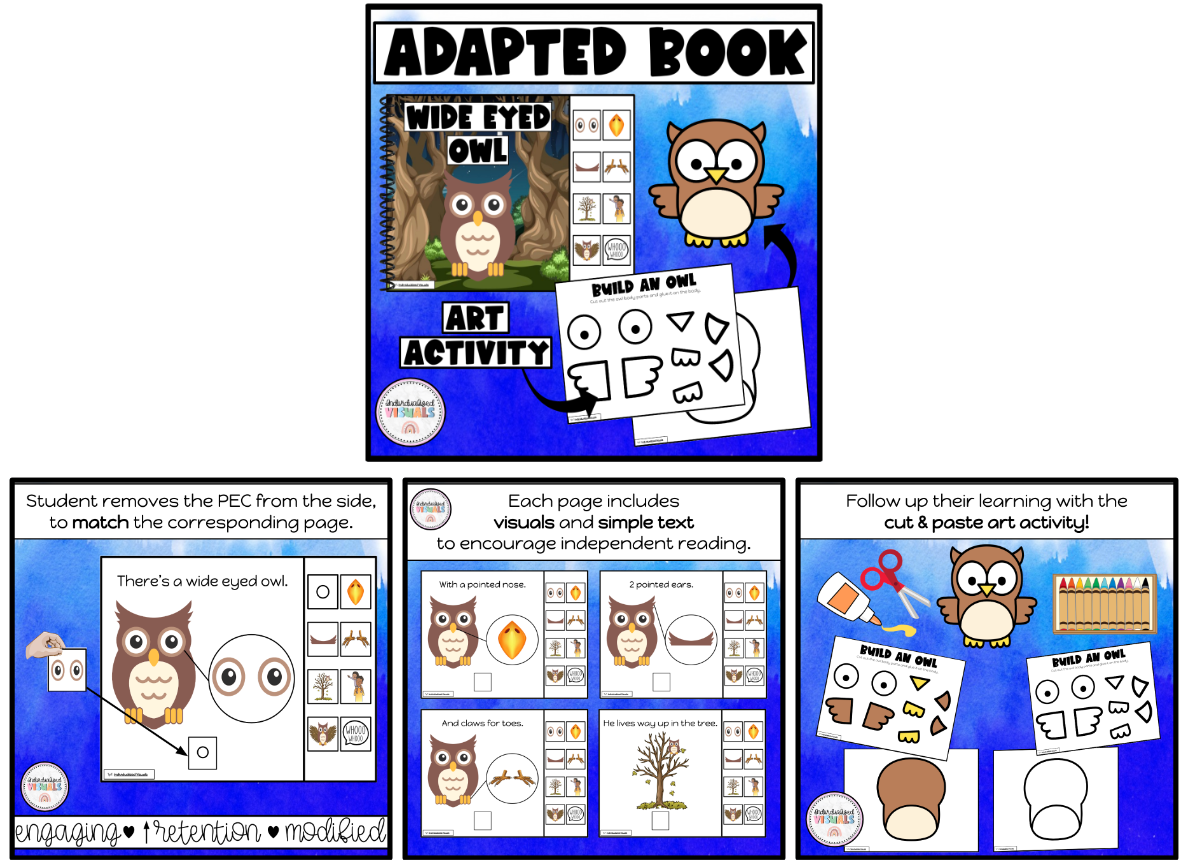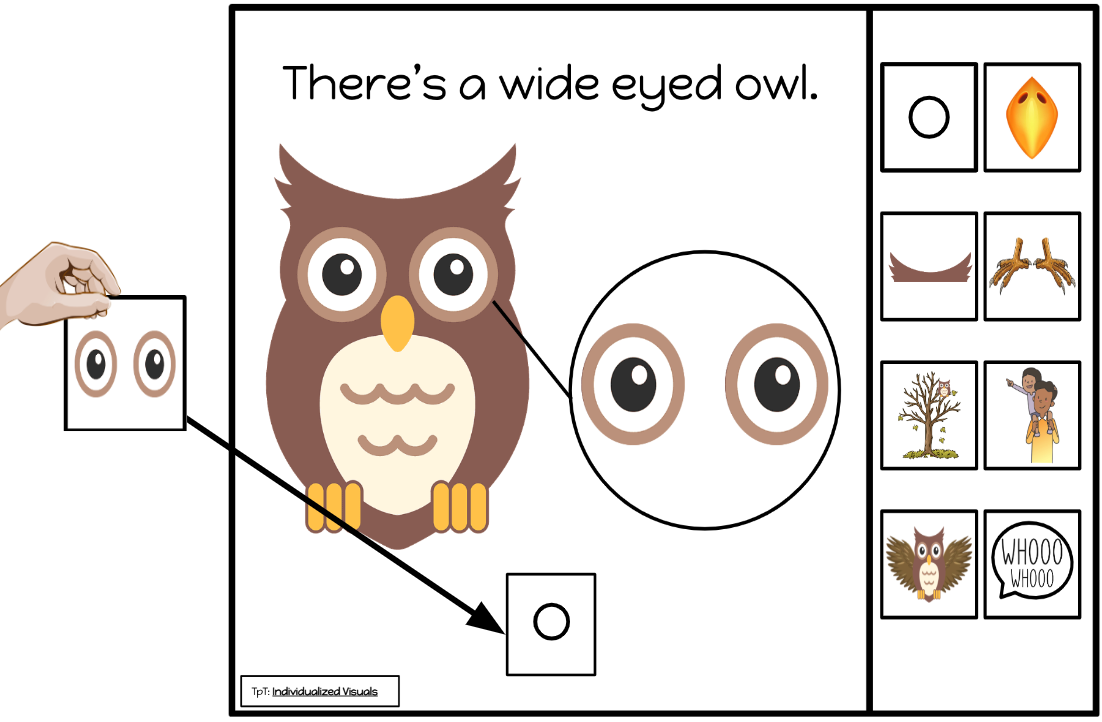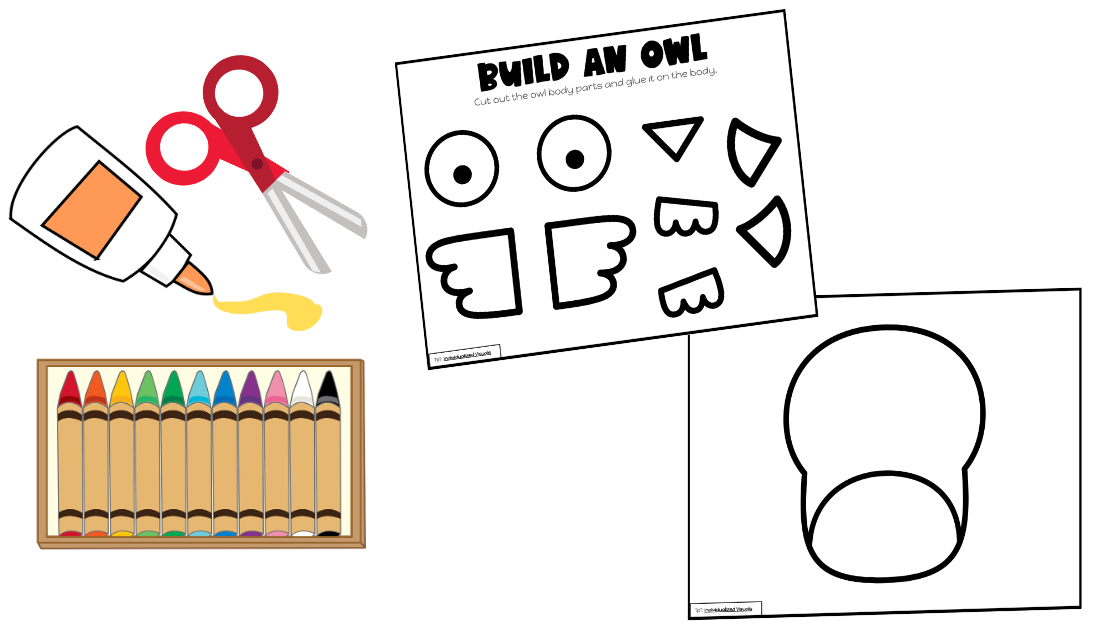Wide Eyed Owl Song Activity for Special Education
What are adapted books?
Adapted books are books that are modified books to fit a child's specific needs. They usually include visual supports, simple text, repetitive language and tactile objects that allow the student to actively participate in the book.
Benefits of Using Adapted Books
Increased story comprehension
Higher engagement
Matching pictures practice
Build fluency with frequently used sight words or personally meaningful words to the child
Build vocabulary
Could be used to teach a skill (ex. Social Story)
Why do I love adapted books?
There are many benefits to reading adaptive books for early readers or students with special needs. I, of course, LOVE to create individualized books that cater towards my kiddos' interests. A few of my students love nursery rhymes and music. One of my students often threw or ripped books, but once we used laminated custom books that catered towards her interests she was able to build not only tolerance but enjoyment! So I knew I HAD to make some for her favourite songs, and I hope your class loves songs too!
This adapted book is about the nursery rhyme, Wide Eyed Owl. You can read this nursery rhyme book as a class lesson, during circle time, 1:1 to assess reading, or have it as an independent activity! Students are asked to read the book, then match the picture from the PECs on the side!
How to use adapted books in the classroom
You can read this nursery rhyme book as a…
Class lesson
During circle time as an interactive song board
Reading 1:1 with a student to assess reading
Small group activity where students can practice taking turns
Independent activity!
Wide Eyed Owl Adapted Book
How to use this velcro book
Easy Prep
Print & laminate each sheet and the PECs so you can use it year after year & student after student!
Add hard velcro on the back of the PECs & soft velcro on the squares of the book.
Bind together with coils OR hole punch for duotang/binder.
How to use
Read with student, encouraging them to point to the words.
Student can remove the PEC from the right side, to match under each picture.
Parts of an Owl Art Activity
How to use this Build Your Own Owl Craft
This activity comes with both a coloured version or the black & white version. They can use the adapted book as a reminder for where the body parts of an owl will go!
Black and white printable: Students will colour the parts of an owl. Then they will cut out the owl body parts. Finally, they will glue them on the owl body to create their own little owl!
Coloured printable: Students will simply cut and paste the body parts onto their owl body!
Lyrics to the Wide Eyed Owl Song
*The words in the brackets ( ) are suggestions on how to incorporate body movements in the song*
There's a wide eyed owl (circles over eyes)
With a pointed nose (triangle nose)
2 pointed ears (use fingers for ears)
and claws for toes (wiggle fingers like toes)
he lives way up in the tree (point up to tree top)
and when he looks at you (point at kids)
he flaps his wings (use arms for wings, and flap)
and says whooo whooo (continue flapping wings)





